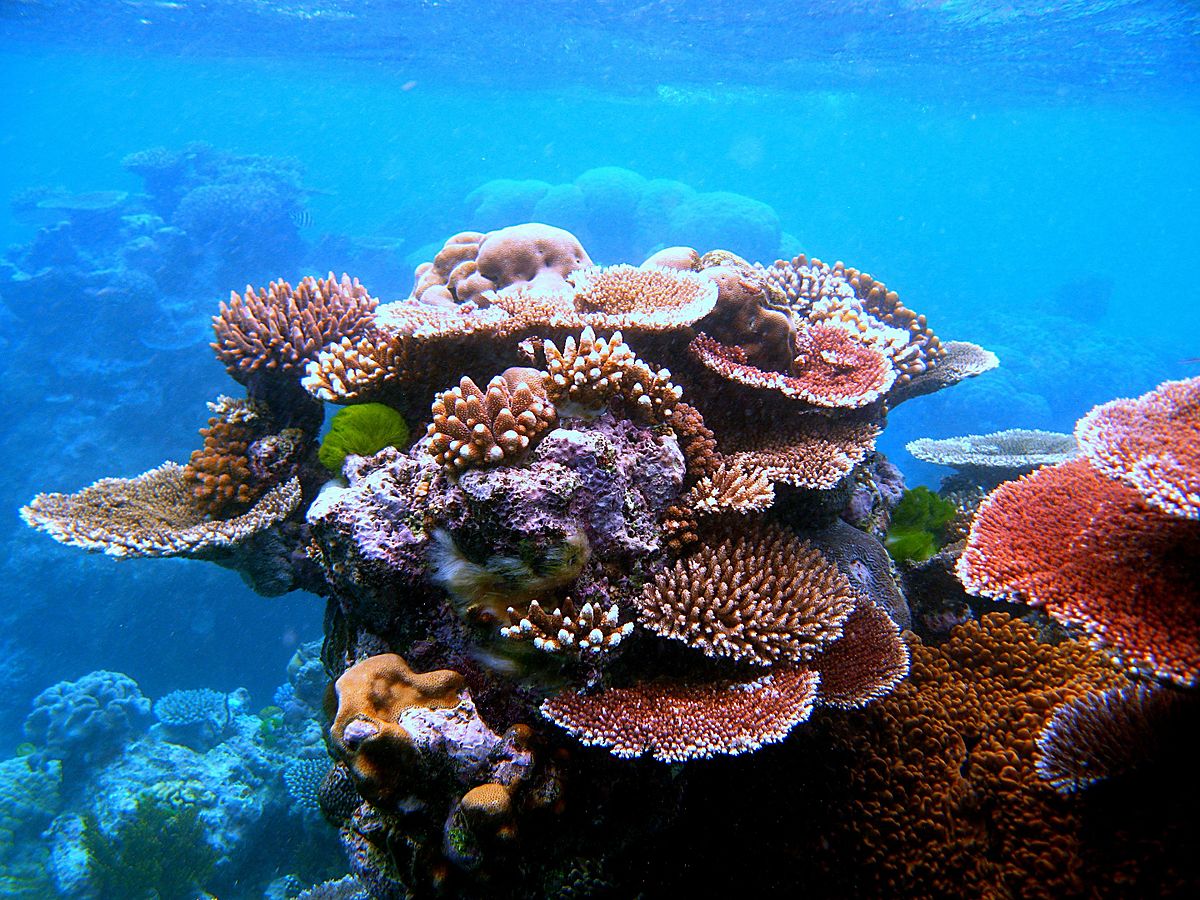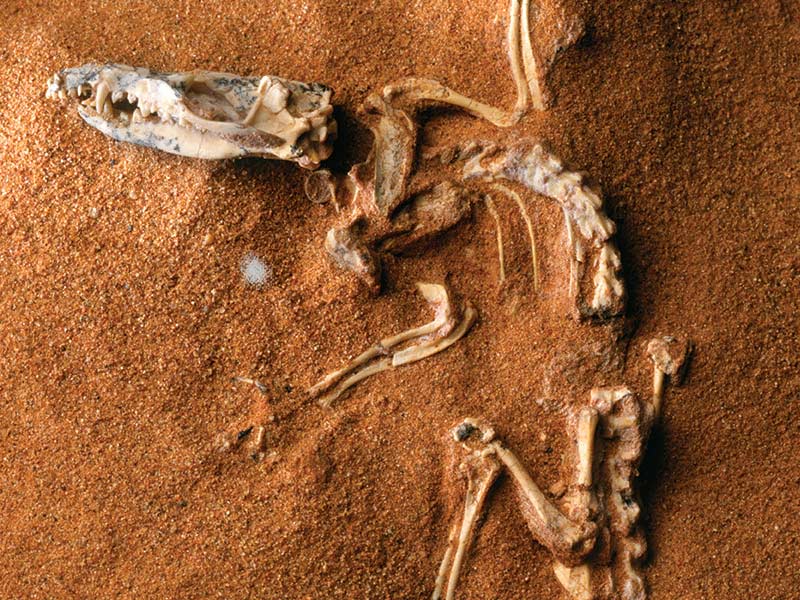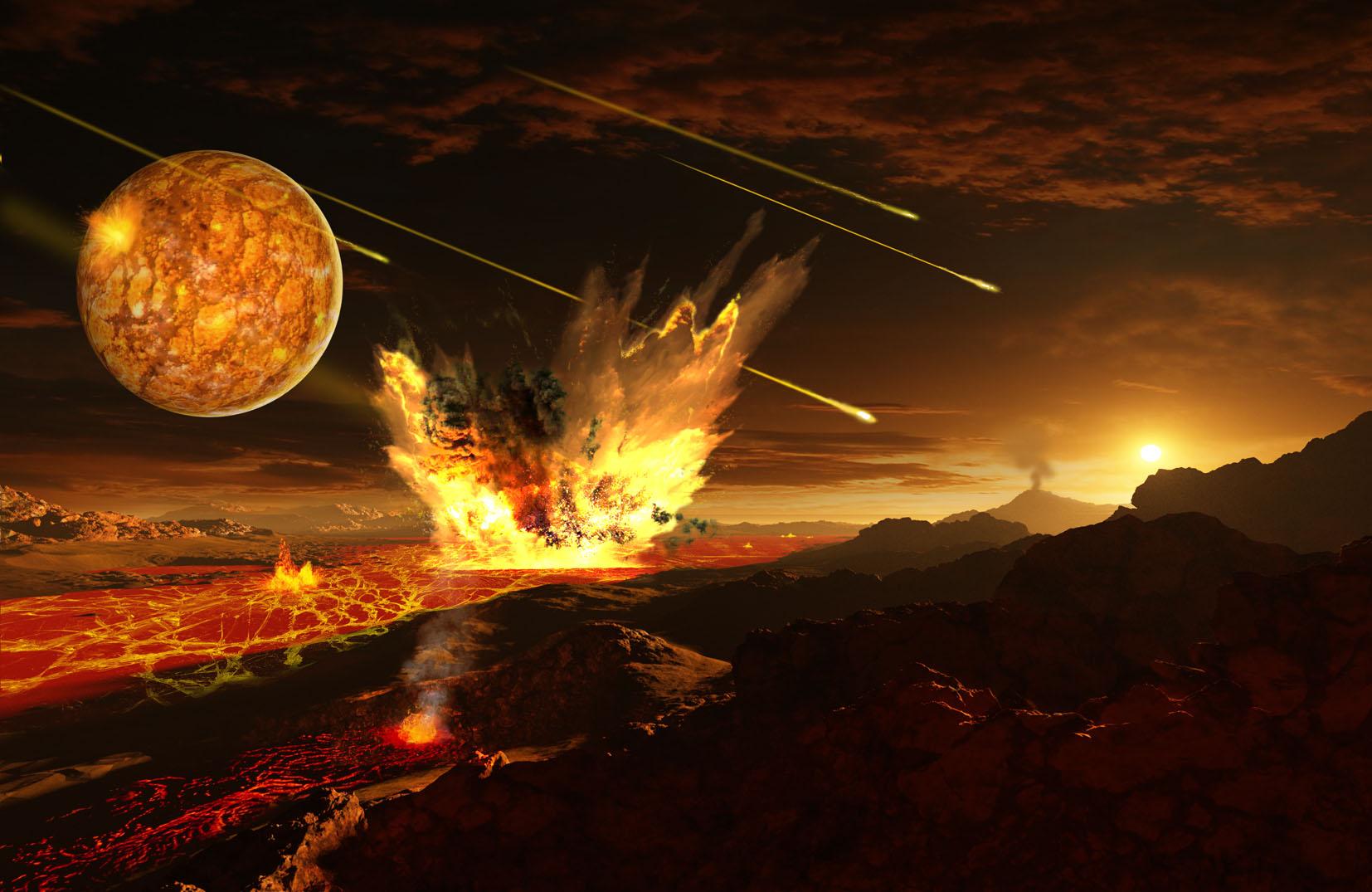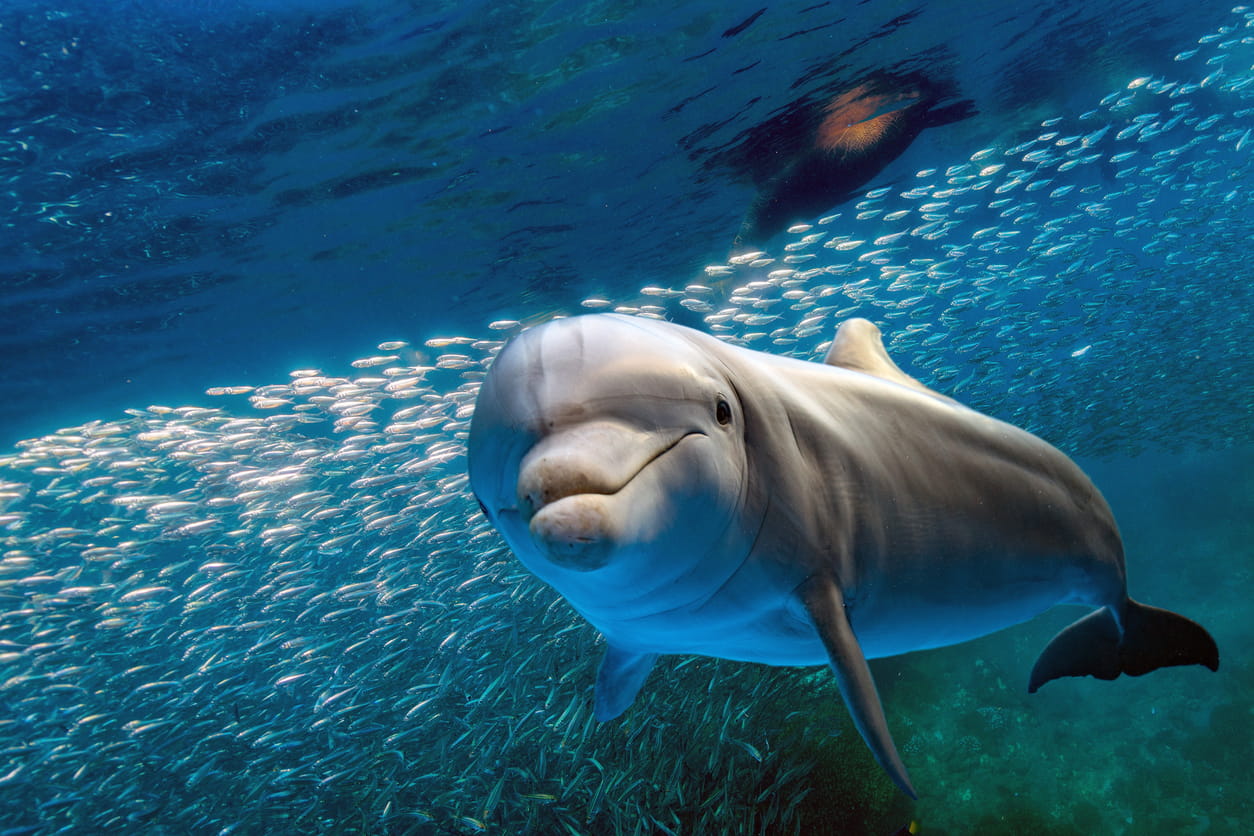So much of what we take for granted about our world—from our body’s access to and use of nutrients, to our planet’s liquid oceans, to the ice floating in your glass of soda—is a direct cause of the structure and polarity of H2O. Learn how those specific properties make water the essential ingredient for life as we know it.
02. Ocean Currents and Why They Matter
No matter where you live, your climate, weather, and even available foods are determined to a great extent by ocean circulation. The uneven heating of the Earth by the Sun and the Coriolis effect result in vast circulation cells of air above the Earth, the movement of huge water masses in the oceans, and resultant “hot spots” of marine life.
03. The Origin and Diversity of Ocean Life
How and where did life begin on Earth? The existence of both photosynthetic and chemosynthetic food chains—along with experiments confirming the mechanisms of abiogenesis—points to the possibility that life could have originated through two different paths. While many questions remain unanswered, two things seem certain: Life began in the oceans, and bacteria are the most successful organisms on the planet.
04. Beaches, Estuaries, and Coral Reefs
Beach organisms exist with the constantly changing winds, waves, and tides—sometimes underwater, sometimes fully exposed to the air. Life in estuaries, where rivers meet the oceans, face constant fluctuations in environmental salinity. And hard corals are continually pummeled by wave action. Yet each of these physically challenging environments can be diverse and fecund ecosystems.
05. Life in Polar and Deepwater Environments
Tropical oceans are relative deserts when compared to the potential productivity of higher latitudes—and it’s all due to spring and fall blooms of phytoplankton. These microscopic photosynthetic organisms form the base of almost all marine food chains, including that of the blue whale, the largest animal known to have ever existed. But far below the penetration of sunlight a very different and only recently discovered food web relies solely on the chemosynthetic ability of bacteria.
06. Phytoplankton and Other Autotrophs
When we think of healthy marine ecosystems, we should be thinking about phytoplankton. In many ways, we owe our existence to these diatoms, dinoflagellates, green algae, cyanobacteria, and others. Not only do scientists believe they are the ancestors of terrestrial plants, but phytoplankton continues to produce about half of all the oxygen available in our atmosphere today.
The vast majority of animals on our planet are the gloriously diverse invertebrates. From microscopic organisms to the crab with a three-meter leg span, marine invertebrates exhibit enormous variety in form and function. They include sessile and mobile organisms, free-living and parasitic. They live at the surface and within the ocean floor sediments, protected by hydrostatic endo- and exoskeletons.
Only certain classes of vertebrates have a marine presence, while others are strictly terrestrial. Mammals are certainly represented in ocean life, but which species should be identified as “marine” when considering ocean productivity? The extremely complex marine food webs maintain long-term stability, even as they undergo natural perturbations over time. But when Homo sapiens enters as an apex predator, productivity can deteriorate, and systems can even collapse.
Through 550 million years of evolution, fish have developed a wide variety of adaptations to the unique demands of living in a watery and mostly dark world. Learn how gills, swim bladders, bioluminescence, chemosensory glands, echolocation, and electrolocation have allowed fish to succeed in almost every type of ocean environment. Which fish are our ancestors? You might be surprised.
10. Marine Megavertebrates and Their Fisheries
While humans have been fishing for hundreds of centuries, we have only recently had a significant impact on marine food webs. Industrialization has led to problems with by-catch and overexploitation of resources. Today—since the megavertebrates we love to eat are often the apex predators of their natural food webs—we are creating trophic cascades with long-term impacts we do not yet understand.
11. Sharks and Rays
Are you afraid of sharks? Fish certainly have good reason to fear these top-of-their-game predators with their multiple rows of teeth, extraordinary sensitivity to smell, taste, and vibration, and ability to detect electrical current better than any other animal. But while four species have been known to assault humans with no provocation, almost 99 percent of the many hundred shark species would rather swim away from us than attack.
12. Marine Reptiles and Birds
While the reptilian evolution of the amniotic egg allowed animals to move completely from the sea onto land, some reptiles retained strong marine ties. These include sea turtles and sea birds whose wide variety of adaptations allow for drinking saltwater, remaining underwater for long periods, and flying great distances using very little energy. But wait . . . did we just classify sea birds as reptiles?
Marine mammals did not evolve from marine species. Rather, they evolved from land mammals who found a plethora of “suddenly” open ecological niches when the dinosaurs became extinct about 65 million years ago. Today’s marine mammals might resemble each other because convergent evolution has led to similar adaptation. But best as scientists can tell, they have five separate lineages and no single common ancestor.
Through tens of millions of years, evolution has resulted in a fascinating array of marine mammal adaptations. With the ability to process thousands of gallons of water each day or dive to a depth of almost three kilometers, and with numerous methods of locomotion or extraordinary social behaviors, these whales, porpoises, phocids, and more can thrive in varied environments around the globe.
If you’ve ever jumped into frigid water, you quickly realize humans are definitely not adapted to life in the sea. What are we missing? In a word, it’s blubber—the thick layer of fat just beneath the skin of almost every marine mammal. In fact, blubber is such a successful insulator that marine mammals have evolved internal and external means for getting rid of all that heat, possibly even including planetary migrations.
16. Mammalian Swimming and Buoyancy
For all practical purposes, terrestrial mammals live on a plane. Marine mammals, on the other hand, navigate a more viscous, three-dimensional environment with all its opportunities and challenges. We understand their propulsion mechanisms fairly well. But how do they control their buoyancy to position themselves in the water column? We don’t yet have the answers.
Not surprisingly, deep-diving marine mammals have evolved a physiology very different than our own. Adaptations including those related to blood chemistry, the location of stored oxygen, a variable heart rate, and articulated rib cages support the ability to go deep and stay long. But what about rising back up to the surface? How do they avoid getting “the bends”—or do they?
Sound travels much better in water than in air. In fact, low-frequency waves, such as those produced by certain whales, can travel through water uninterrupted for hundreds or even thousands of kilometers, allowing the animals to be “in touch” with their group over vast distances. Other marine mammals produce and hear sounds at high frequencies perfect for echolocation. But what happens when human-generated sound gets in the way?
19. Food and Foraging among Marine Mammals
Trophic patterns are complex cycling webs, often difficult to completely decipher. But two things are clear: Almost all marine food webs are based on microscopic photosynthesizers, and only a small fraction of the energy available at any trophic level becomes available to the next level. Adaptations such as baleen, ventral pleats, and unique tooth morphology allows these large animals to meet their energy needs.
With plastic and nylon lines and nets becoming common in the last century, by-catch became an even greater problem for the marine mammals. When the media picked up the story in the mid-1960s, the public became engaged, and the Marine Mammal Protection Act was passed in 1972. But whale entanglement remains a problem, and some argue that even whaling was far less cruel.
21. Breeding and Reproduction in a Large Ocean
Semi-aquatic marine mammals exhibit behaviors quite different than those who live fully in the water. In the former, an entire female community in one geographic area can come into estrus simultaneously and needs relatively few males—the strongest and “sneakiest”—to reproduce. In the latter, reproduction appears to be one of the driving forces of whale songs that can be heard over thousands of kilometers.
22. Behavior and Sociality in Marine Mammals
From individual whales that corral their confused prey to highly coordinated bubble-net feeding and aunts who “babysit,” marine mammals have developed an extraordinary variety of social and hunting behaviors—each with its own “cost/benefit analysis” developed over millions of years. If the energy expenditure does not support the goal of passing on genetic material, natural selection will eventually drop the adaptation.
With sixty million years of evolution on their side, marine mammals have adapted to the widest possible variety of marine ecological niches. Some live only in rivers or lakes, others only in waters over the continental shelves, and some in the open ocean. A few—like the Weddell seal with exceptional blubber, diving skills, oxygen capacity, and ice-sawing teeth—are even adapted to live at the poles.
Within their own species, marine mammals have developed sophisticated communication. In captivity, we know they can be trained to learn rules, which indicates higher cognitive function. And even in the wild, we have documented some extraordinary instances of learning and cultural transmission of information. But is their intelligence comparable to our own? Maybe the question itself is meaningless.
Are marine mammals to be exploited as a resource? Or are they intelligent creatures to be revered with an almost religious admiration? Your answer might depend to some extent on your country and culture of origin—and the truth is probably somewhere in between. Our relationship with these impressive animals continues to evolve as we increase our understanding of their biology, cognition, and sociality.
Over and over, humans have behaved as if a given resource were inexhaustible. That was certainly the case with worldwide industrial whaling of the early 20th century when six species of whales were hunted to dangerously low numbers. In the near future, as their populations continue to recover, some countries are expected to promote a resumption of the commercial whale hunt.
Although the irony is unmistakable, our understanding of marine mammals increased tremendously by having access to carcasses during the years of industrial whaling. Today, we focus on species protection while learning as much as we can via SCUBA, SONAR, tagging, biopsy darts, photo-identification, studying animals in captivity, and examining stranded individuals when available.
28. Marine Mammal Strandings
Most of us seem to have a natural instinct to want to help a stranded marine mammal, but it requires very specific skills to render aid without causing further stress and harm. Even with the best intentions and professional assistance, not all animals can be saved. What can we learn from these strandings—no matter how they end—and where are they most likely to occur?
Our high-tech use of the ocean for food, transportation, and energy has far-reaching effects, particularly on certain species. Focusing on issues from noise pollution to microplastics, we can mitigate our impact to provide better futures for ourselves as well as for marine life. The work begins with understanding the extent of our true impacts.
Although there was a time when we treated the oceans as if they were too vast to feel our impact, we now know the truth: we have contributed to global climate change, ocean acidification, and overfishing. The results are potentially catastrophic—both to marine life and to our own health. But there is a bit of light at the end of this tunnel, and it depends in part on our own daily actions.
 Oceanography: Exploring Earth’s Final Wilderness
Oceanography: Exploring Earth’s Final Wilderness
 What Darwin Didn’t Know: The Modern Science of Evolution
What Darwin Didn’t Know: The Modern Science of Evolution
 A New History of Life
A New History of Life
 Major Transitions in Evolution
Major Transitions in Evolution
 The Origin and Evolution of Earth: From the Big Bang to the Future of Human Existence
The Origin and Evolution of Earth: From the Big Bang to the Future of Human Existence
 Earth at the Crossroads, Understanding the Ecology of a Changing Planet
Earth at the Crossroads, Understanding the Ecology of a Changing Planet




